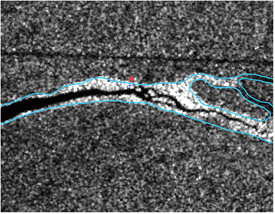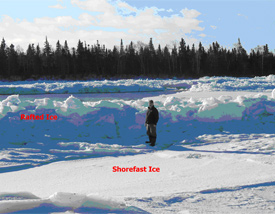Background
The Ice Classification Product was developed through the success of the Ice Front Product and to further enhance the Badger River Ice Service. The product was first used operationally in the 2009-10 season. The product classifies portions of the river as open water or water on ice, non-consolidated ice, or consolidated ice.
The classifications provide qualitative information on the strength and variation in the ice cover and the presence of ice in open water portions of the river. The information obtained is critical in understanding river ice conditions during progression of the ice front and break-up of the ice cover.
Ice classification is based on a measure of backscatter, appropriate image enhancement techniques, and classification thresholds. Backscatter measure is based on a comparison on energy that is emitted from the sensor and the energy that is returned. Filtering is an example of an image enhancement technique. Thresholds are defined to separate the classifications and are based on past experience, weather observations, and past imagery classifications.
Ice Classifications
Open water or water on ice: This classification depicts areas of the river that have no ice cover and it is sensitive to smooth ice or water on ice. The red dot in the satellite image indicates where the picture was taken. The darker areas of the image indicate open water.
Figure 1: Open water or water on ice.
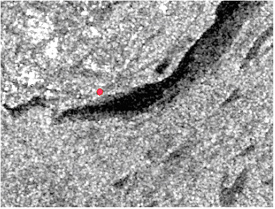
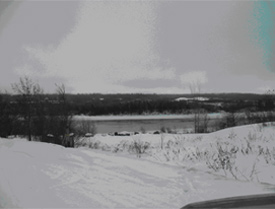
Non-Consolidated Ice or Intact Ice: Depicts portions of the river with complete ice and snow cover. Corresponding to the left side of the image, the picture was taken looking upstream.
Figure 2: Non-Consolidated Ice or Intact Ice
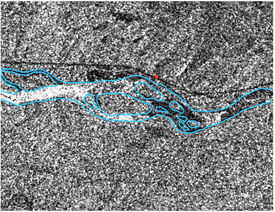
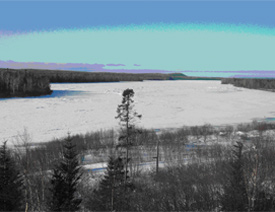
Consolidated Ice: Depicts thick, rafted, piled ice types. Separating rafted ice from shore ice is difficult for the river ice classification. Bright areas in the image indicate ice while dark areas indicate open water.
Figure 3: Consolidated Ice
